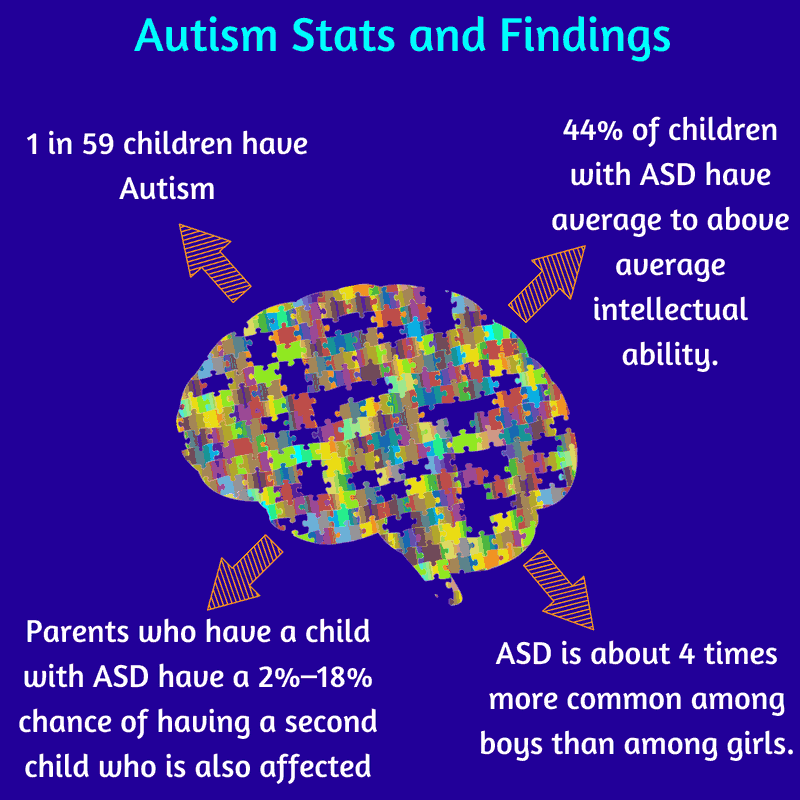
AUTISM STATS AND FINDINGS
What is Autism?
Autism or Autism Spectrum Disorder (ASD), is characterized by a range of conditions affecting a person’s social skills, ability to communicate, and an array of behavioral patterns. Symptoms of autism normally appear between 2 and 3 years of age but in some cases it can be diagnosed as early as 18 months. Every person is affected by autism differently as the disease displays a spectrum of strengths, challenges, and symptoms with varying severities. Seeking evaluation as soon as symptoms are noticed is very important since early intervention can have a significant positive impact on any child with ASD.
Below we have compiled some of the most recent findings and stats regarding autism from credible sources including Autism Speaks and Centers for Disease Control and Prevention.
Prevalence:
-
1 out of 59 children in the United States have autism.
-
An estimated 1 out of 42 boys and 1 in 189 girls are diagnosed with autism in the United States.
-
Autism is the fastest-growing serious developmental disability in the U.S.
Kids With Autism After High School and In Their Early 20s
-
32% of kids with autism get a paid job within the first two years after graduating.
-
31% of kids with autism live apart from parents with or without supervision.
-
76% of kids with autism socialize with friends through meetups, phone calls, & activities.
-
36% of kids with autism attend any sort of postsecondary education.
Risk Factors and Characteristics
-
44% of children identified with Autism has average to above average intellectual ability.
-
Parents who have a child with ASD have a 2%–18% chance of having a second child who is also affected.
-
About 10% of children with autism are also identified as having genetic and chromosomal disorders including Down Syndrome, Fragile X Syndrome, and Tuberous Sclerosis.
Economic Costs:
-
Autism costs the nation over $238 billion per year, a figure expected to significantly increase in the next decade.
-
Children with ASD have medical expenditures that exceeded those without ASD by an average of $4,110–$6,200 per year.
-
Intensive behavioral interventions for children with ASD cost $40,000 to $60,000 per child per year.
Sources:
- “What Is Autism?” Toys’R’Us | Autism Speaks, 31 May 2012, www.autismspeaks.org/what-autism.
- “Autism Spectrum Disorder (ASD).” Centers for Disease Control and Prevention, Centers for Disease Control and Prevention, 26 Apr. 2018, www.cdc.gov/ncbddd/autism/data.html.
- “Talk About Curing Autism (TACA).” Talk About Curing Autism TACA, 2018, tacanow.org/autism-statistics/.
- “Indicators Report: 1 in 3 Young Adults with Autism Disconnected from Work and School.” Toys’R’Us | Autism Speaks, 21 Apr. 2015, www.autismspeaks.org/blog/2015/04/21/report-1-3-young-adults-disconnected-work-and-school


Leave a comment